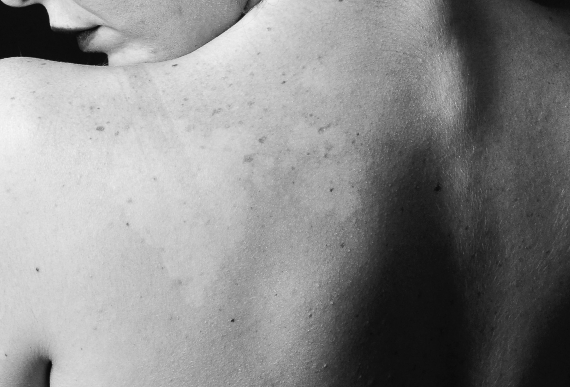Skin lesions are one of the most common human diseases and affect millions of people worldwide 1. Moreover, its prevalence will raise every year due to the aging of the population; studies reveal that it increases to 50% in patients over 65 years, with an average of more than two skin diseases per elder 2. The issue becomes more critical if we consider that the incidence of skin cancer also increases with age. The clinically significant changes of the skin are as varied as the diseases and disorders themselves and may include infections by bacteria, viruses or mold, exposure to allergens or toxins, inherited genetic conditions, immune system disorders, trauma and cancer. The diversity of dermatological diseases, as well as their symptoms and causes, create challenges for the objective diagnosis and evaluation of patient lesions on the daily clinical practice.

Diagnosis in dermatology is largely based on visual inspection of a lesion or the suspicious skin area. Therefore, diagnostic ability and accuracy depends greatly on the experience and training of dermatologists or, in areas where dermatological services are not readily available, general practitioners. For example, dermatologists have approximately 70% accuracy in the visual diagnosis of melanoma 3. In suspicious cases, the visual inspection is supplemented with different diagnostic tools (e.g. dermoscopy). Even with this technical support, dermatologists rarely achieve clinical test sensitivities greater than 85% 4 5 . The situation is even worse if we consider that there is a shortage of dermatologists and the diagnostic accuracy of non-expert clinicians is not as good as that of dermatologists, ranging from 20 to 40% according to different studies 6-8 . Thus, new diagnostic tools to assist dermatologists or general practitioners to accurately diagnose skin lesions should be developed, evaluated and optimized.
As diagnosis of a skin lesion is mainly based on its visual inspection, the use of artificial intelligence (AI) for this task is a growing trend in dermatology. Particularly, computer vision, a subfield of AI that mimic tasks performed by the human visual system, allows the rapid reviewing and classification of immense amounts of images. In dermatology, image recognition using a set of computer vision algorithms called deep convolutional neural networks (CNNs) prove to be a significant aid to physicians for diagnosis of melanoma, with accuracies comparable to those of expert dermatologists 9-14. Similar results were also found for non-pigmented skin lesions such as acne, rosacea, psoriasis, atopic dermatitis or impetigo. Moreover, a recent work showed the results of a deep learning system able to classify 26 of the most common skin conditions 15.
Thus, these technologies show tremendous potential to improve the ability of dermatologists and general practitioners to correctly diagnose a skin lesion. Some of these classifiers have been translated onto online platforms and smartphone applications 16. However, many aspects of their use have yet to be elucidated and improved. Algorithms’ decisions are usually defined on a small subset of disease classes and therefore they do not reflect a clinical practice that include many more diagnostic options 17. In addition, computer vision models combine pixel-based visual information in a highly intricate way, making it difficult to link the output of the model back to the visual input, needing extensive validation. Lastly, the efficacy of CNNs depends largely on the complexity and number of images utilized for their training, raising concerns about their ability to generalize on a truly external test set coming from a different image database. For example, an image dataset composed mainly of skin images of a fair-skinned Caucasian population cannot be extrapolated to other racial groups. Because of all these caveats, the use of these classification algorithms should be regarded as an aid for dermatologists or general practitioners but not as a tool for automatic diagnoses without a supervising physician.

At any rate, a digital skin assistance tool should probably provide an undeniable help for dermatologists to reduce the morbidity and mortality of dermatological diseases by favoring early diagnosis and avoiding unnecessary procedures. Moreover, this technology would help primary care physicians to decide which patients are at highest risk, for example, of skin cancer, recommending an urgent referral to a dermatologist for confirmation and for total body skin examination. These models could be easily implemented on a website, mobile app, tele-dermatology platform or even integrated into an electronic medical record system enabling fast and cheap access to skin screenings, even outside hospitals or medical centers. In the end, automated diagnostic systems using AI would allow clinicians to spend more time conducting work in line with their skills and training, with the assistance of AI tools, with the final goal of improving patient care in a routine clinical setting.
Carlos M. Galmarini
References
1. Hay RJ, Johns NE, Williams HC, et al. The global burden of skin disease in 2010: an analysis of the prevalence and impact of skin conditions. J Invest Dermatol 2014; 134:1527-34.
2. Lim HW, Collins SAB, Resneck JS, Jr., et al. The burden of skin disease in the United States. J Am Acad Dermatol 2017; 76:958-72 e2.
3. Argenziano G,Soyer HP. Dermoscopy of pigmented skin lesions–a valuable tool for early diagnosis of melanoma. Lancet Oncol 2001; 2:443-9.
4. Kittler H, Pehamberger H, Wolff K, et al. Diagnostic accuracy of dermoscopy. Lancet Oncol 2002; 3:159-65.
5. Vestergaard ME, Macaskill P, Holt PE, et al. Dermoscopy compared with naked eye examination for the diagnosis of primary melanoma: a meta-analysis of studies performed in a clinical setting. Br J Dermatol 2008; 159:669-76.
6. Federman DG, Concato J,Kirsner RS. Comparison of dermatologic diagnoses by primary care practitioners and dermatologists. A review of the literature. Arch Fam Med 1999; 8:170-2.
7. Federman DG,Kirsner RS. The abilities of primary care physicians in dermatology: implications for quality of care. Am J Manag Care 1997; 3:1487-92.
8. Moreno G, Tran H, Chia AL, et al. Prospective study to assess general practitioners’ dermatological diagnostic skills in a referral setting. Australas J Dermatol 2007; 48:77-82.
9. Esteva A, Kuprel B, Novoa RA, et al. Dermatologist-level classification of skin cancer with deep neural networks. Nature 2017; 542:115-8.
10. Haenssle HA, Fink C, Schneiderbauer R, et al. Man against machine: diagnostic performance of a deep learning convolutional neural network for dermoscopic melanoma recognition in comparison to 58 dermatologists. Ann Oncol 2018; 29:1836-42.
11. Han SS, Kim MS, Lim W, et al. Classification of the Clinical Images for Benign and Malignant Cutaneous Tumors Using a Deep Learning Algorithm. J Invest Dermatol 2018; 138:1529-38.
12. Fujisawa Y, Otomo Y, Ogata Y, et al. Deep-learning-based, computer-aided classifier developed with a small dataset of clinical images surpasses board-certified dermatologists in skin tumour diagnosis. Br J Dermatol 2018; 180:373-81.
13. Brinker TJ, Hekler A, Enk AH, et al. Deep neural networks are superior to dermatologists in melanoma image classification. Eur J Cancer 2019; 119:11-7.
14. Tschandl P, Codella N, Akay BN, et al. Comparison of the accuracy of human readers versus machine-learning algorithms for pigmented skin lesion classification: an open, web-based, international, diagnostic study. Lancet Oncol 2019; 20:938-47.
15. Liu Y, Jain A, Eng C, et al. A deep learning system for differential diagnosis of skin diseases. arXiv 2019; 1909.05382.
16. Chuchu N, Takwoingi Y, Dinnes J, et al. Smartphone applications for triaging adults with skin lesions that are suspicious for melanoma. Cochrane Database Syst Rev 2018; 12:CD013192.
17. Maron RC, Weichenthal M, Utikal JS, et al. Systematic outperformance of 112 dermatologists in multiclass skin cancer image classification by convolutional neural networks. Eur J Cancer 2019; 119:57-65.
Comments on this publication